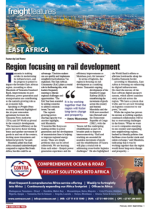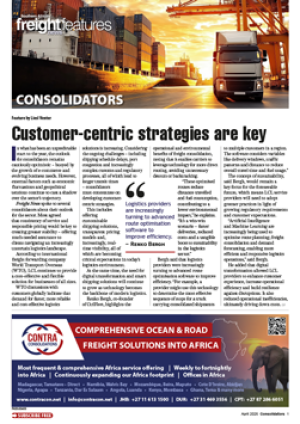Port expansion – both already happening and planned – is pitting operators against each other as they vie for hub status. Hub ports are needed to support the increasing integration of the region with global supply chains.The main protagonists are Tanzania and Kenya.Tanzania’s plans have been boosted by the European Union (EU) investing EUR 15 million in funding for the Tanzania Trade and Transport Improvement Project, which is set to launch in 2025. “This project unlocks the port’s full potential as a vital hub for regional and global trade, driving economic growth,” according to a European Union statement.Much progress has already been made in improving the port. Vessel waiting times have been reduced by 85%, dropping from an average of 46 days in May 2024 to seven days by September 2024, according to the ports authority.This has led to shipping lines dropping a $1 000 peak season charge due to delays, says Tanzania Ports Authority (TPA) director general Plasduce Mbossa. In 2024, container throughput reached 27 000 TEUs a month – well ahead of the previous peak of 15 000 TEUs.The TPA is also on a marketing drive, having opened offices in Uganda, Burundi, Rwanda, the Democratic Republic of Congo, Malawi and Zambia. In April 2024, TPA reduced wharfage rates for containerised cargo bound for Zambia by more than 50%,Tanzania’s Lake Victoria ports are also being upgraded to accommodate the Mwanza Hapa Kazi Tu, which will be able to carry 400 tons of cargo and 20 vehicles.In addition, the port of Bagamoyo is planned to be the biggest port in the region, with a capacity of 20m TEUs.The EU investment will help authorities address challenges such as operational bottlenecks, customs delays and inefficiencies, according to the statement.In the face of this direct competition from its neighbour, Kenya is expanding the Port of Mombasa and also has a new port, Lamu, which is positioned to act as a hub for neighbouring South Sudan and Ethiopia, serving as an alternative to the ports of Sudan, Djibouti and Mombasa. Expansion is under way in Mombasa to ensure the port remains the biggest in East Africa.In January 2025, Kenya Ports Authority (KPA) managing director William Ruto announced plans to modernise and expand Mombasa’s capacity by 300 000 TEUs a year, to 2.4m TEUs, with the harbour being positioned as the most efficient and modern in East Africa. The approach of the two countries is a study in the difference between privatisation and state ownership. The KPA owns and manages most of Mombasa, while in 2023 the management of the Dar es Salaam container terminal was moved from one private operator to another. Tanzania International Container Terminal Services was replaced by DP World, which has a 30-year concession to operate and modernise the multipurpose Dar es Salaam port.ER

